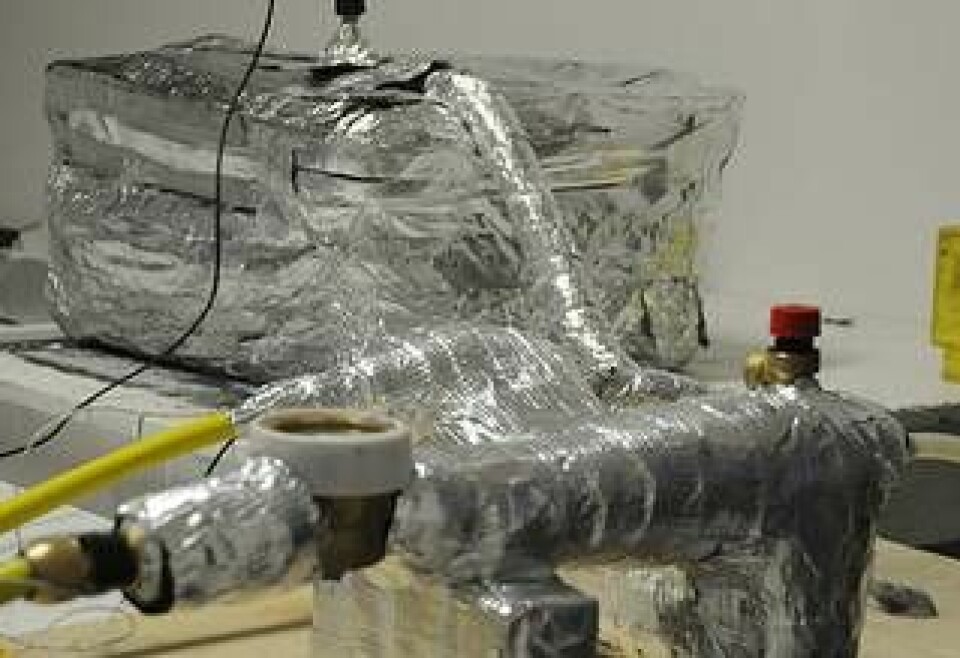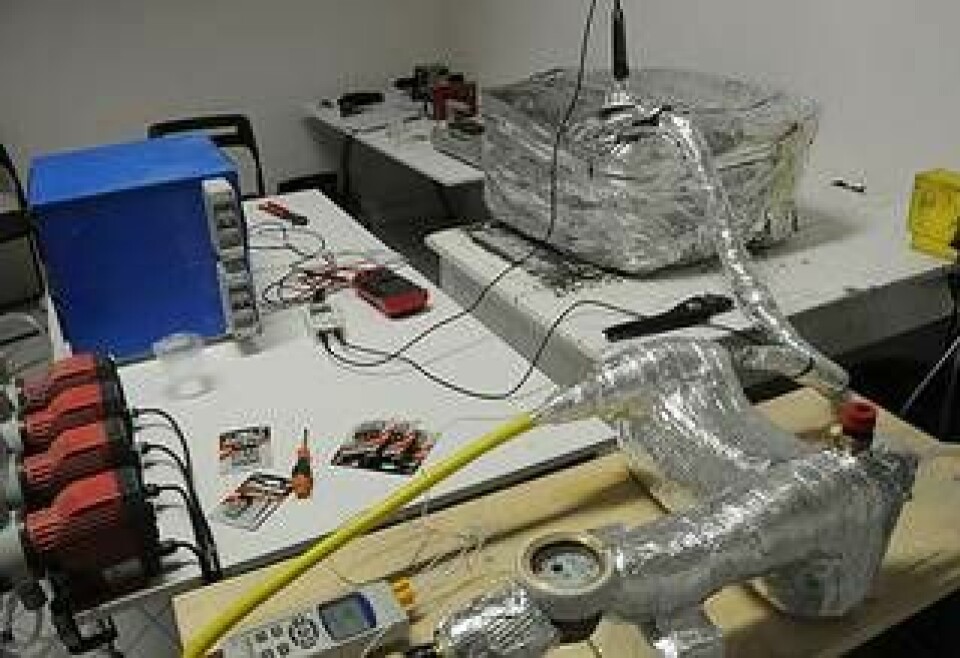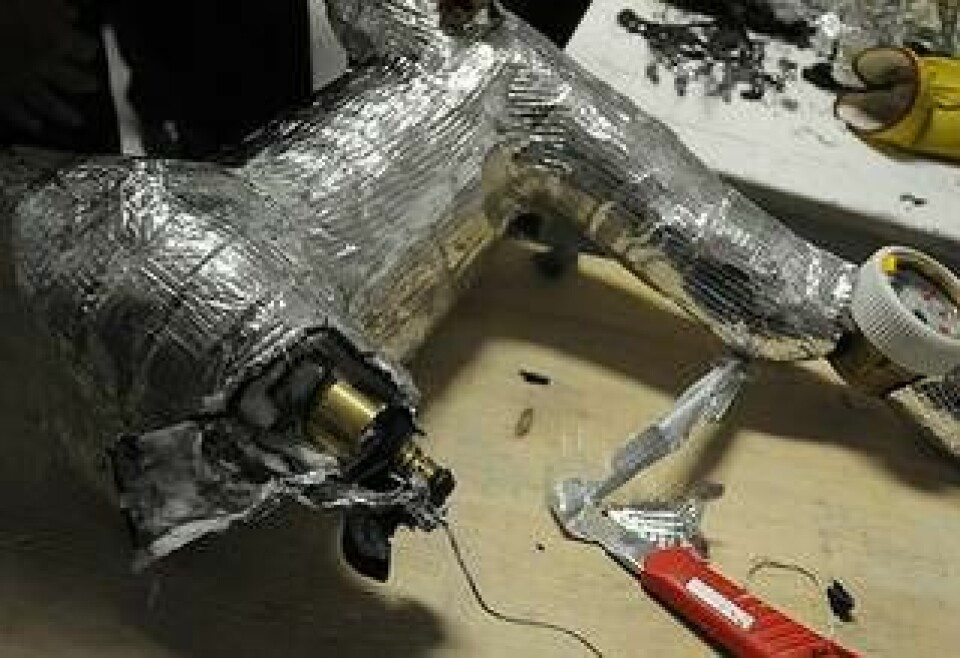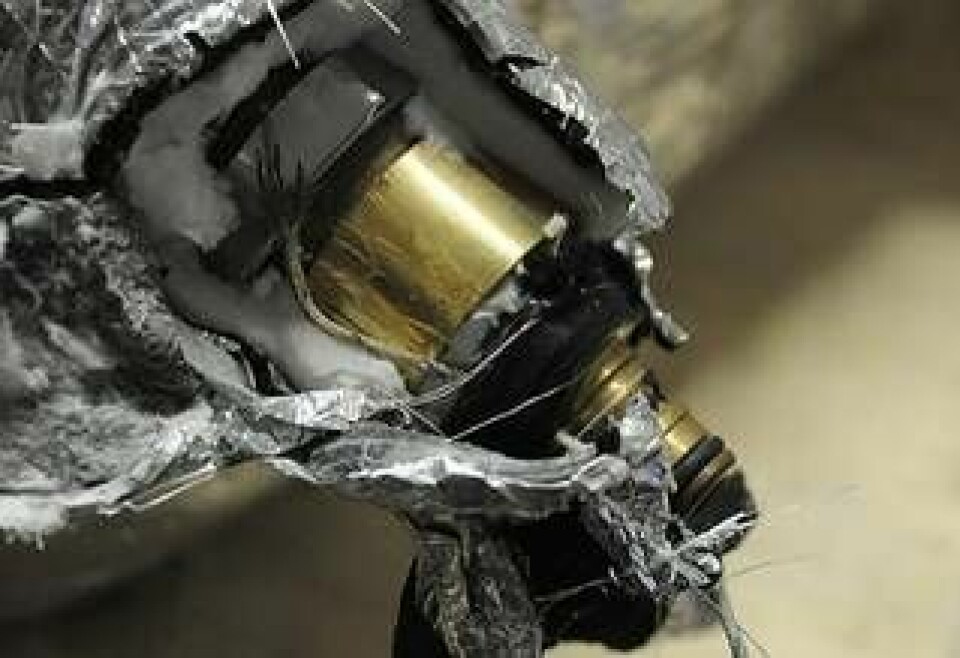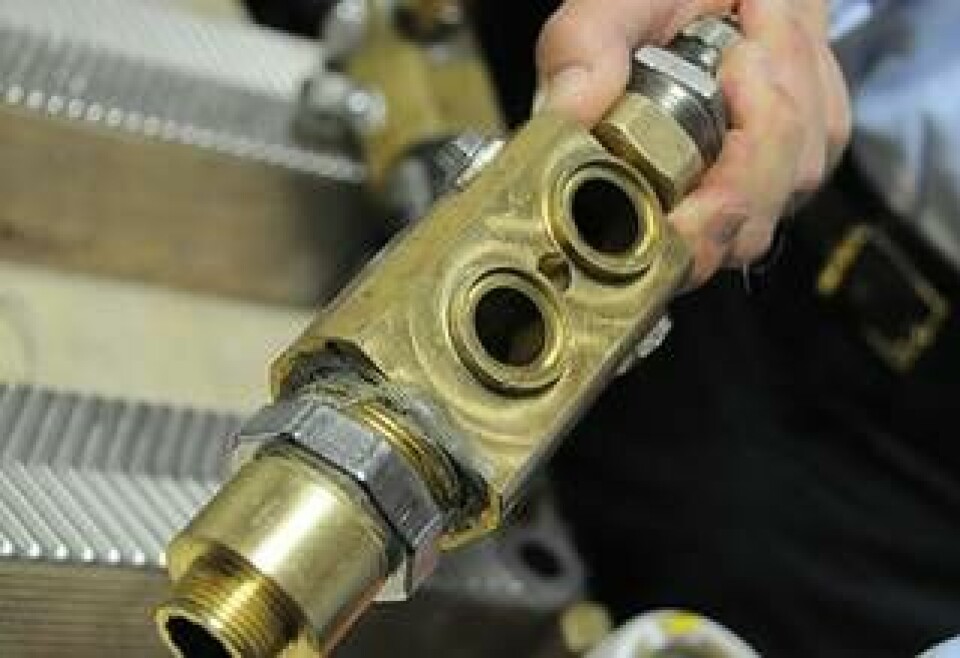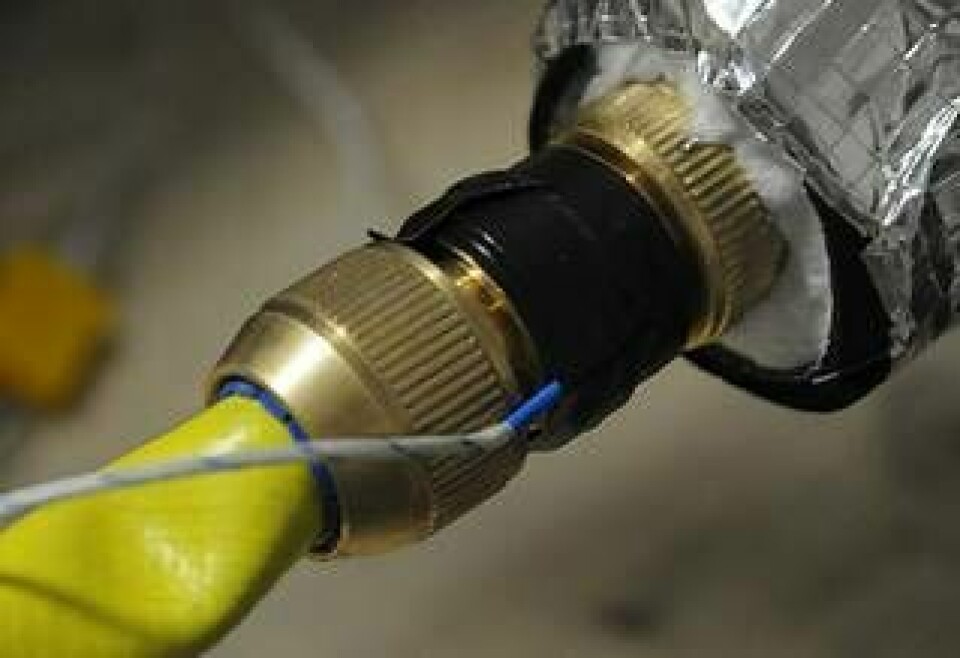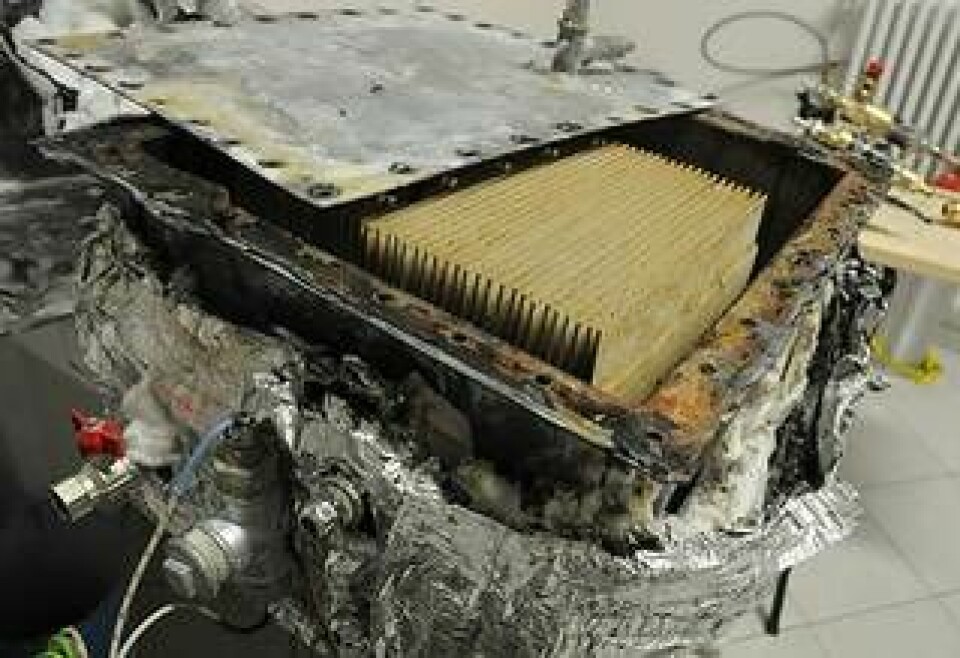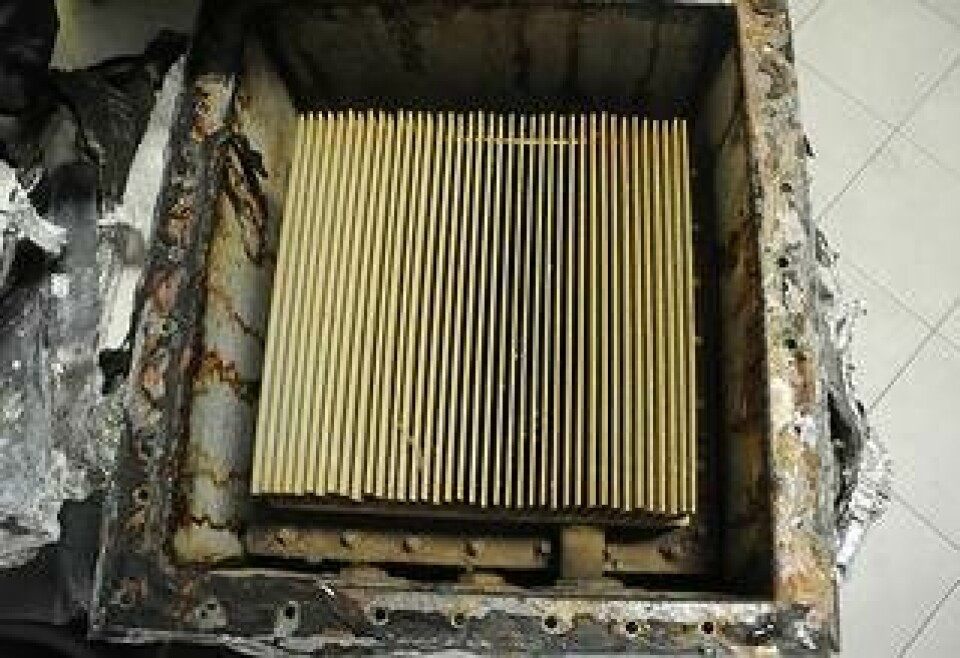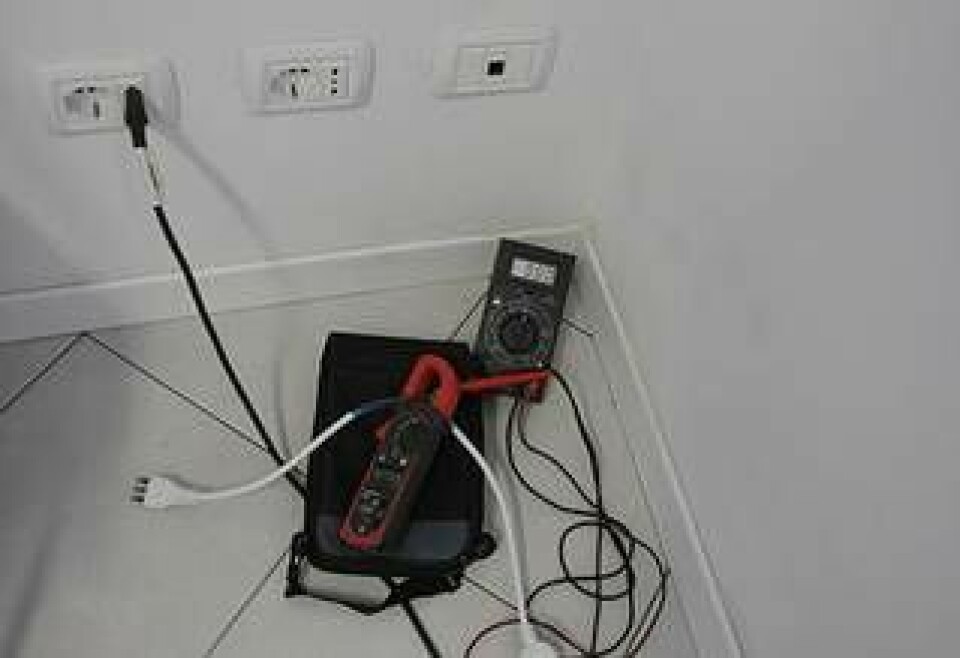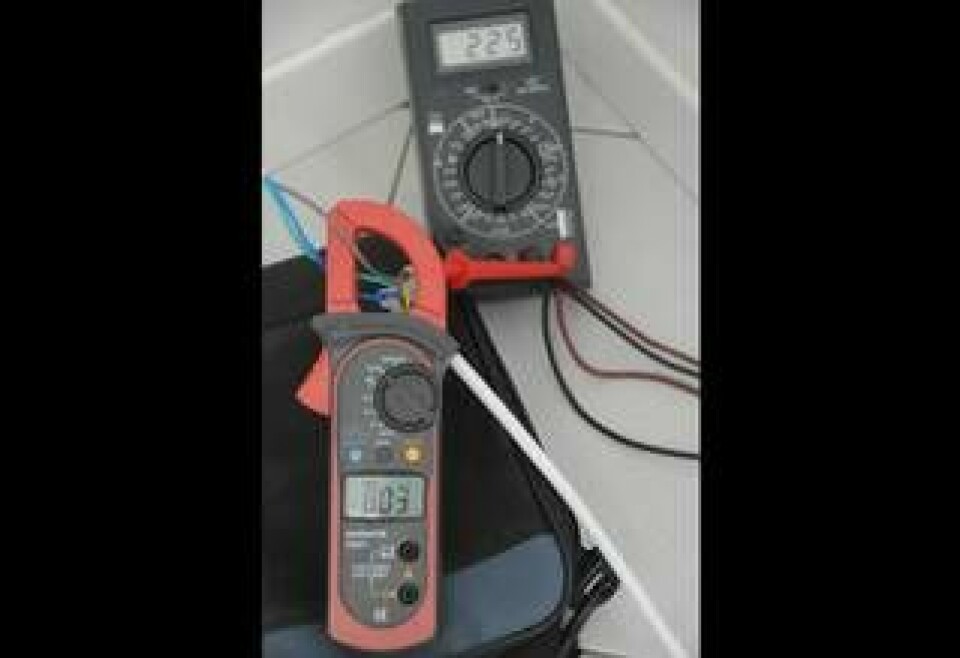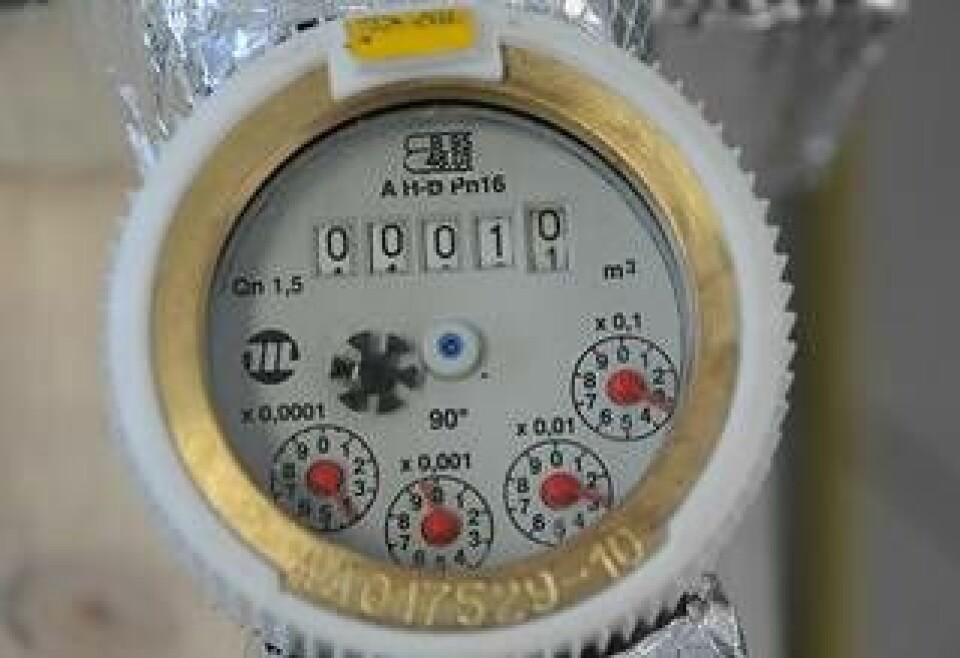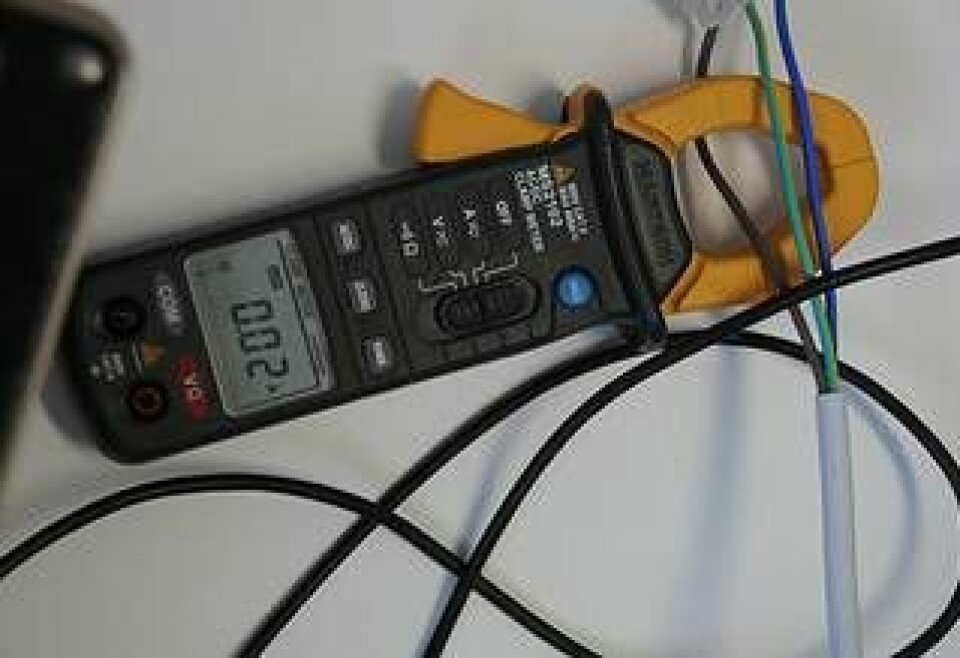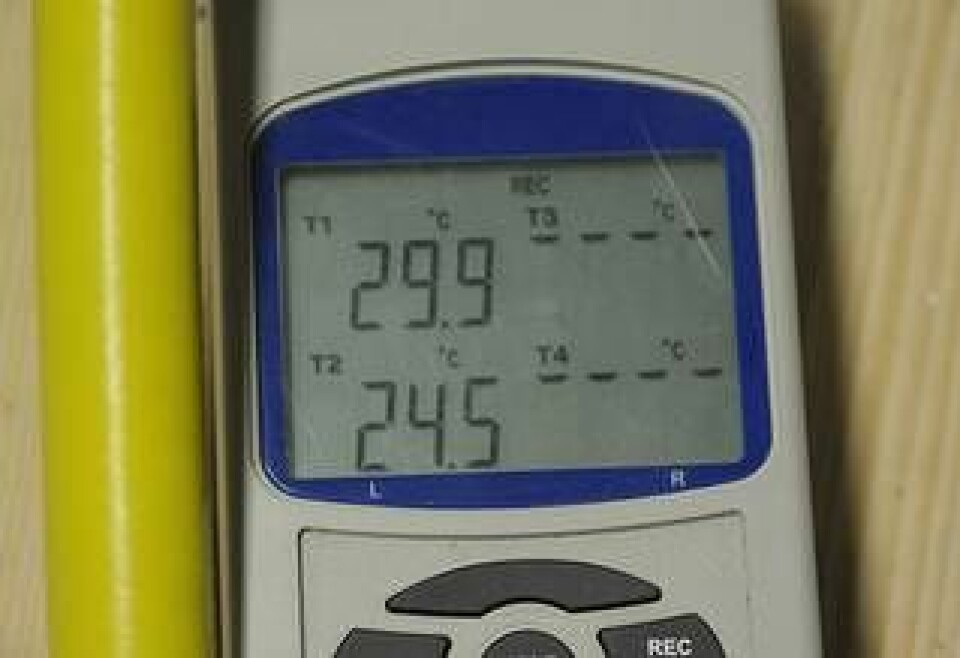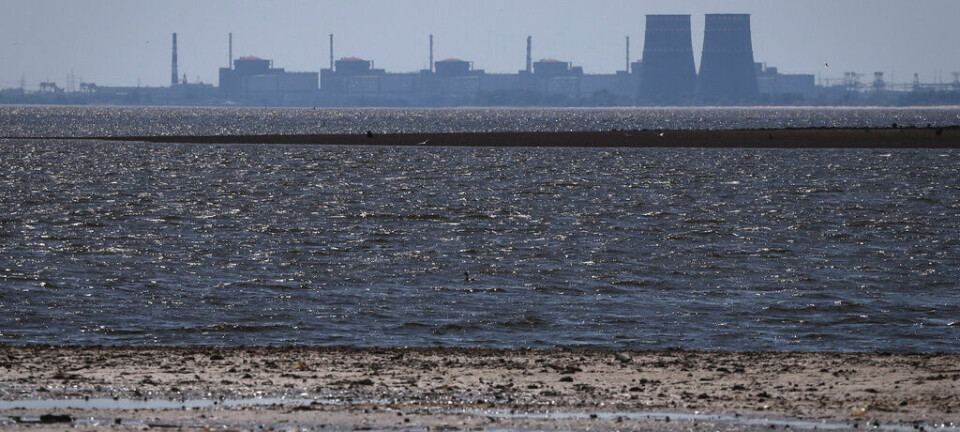(Swedish version here).
Interest in the latest test of Andrea Rossi’s energy catalyzer has exceeded that in any previous test. The result has been discussed intensely internationally. Does Rossi’s apparatus generate net energy. If so, how much.
The shortcomings of the test measurement methods were clear, though significant improvements had been made compared to previous ones. Data were retrieved only because Ny Teknik, without being prepared, took responsibility for gathering and recording the readings.
A first, conservative analysis of the measurements was made by Ny Teknik’s reporter immediately after the test (here's a spread sheet with the data). Three extensive subsequent analyses have been done by the Americans Horace Heffner, David Roberson and Bob Higgins.
All three noted that deficiencies in the measurement methods make the result uncertain. Among the flaws is questionable positioning of the thermocouples for measuring water temperature.
In dialogue with Ny Teknik, however, Heffner, Roberson and Higgins tried to get answers to various questions to reduce uncertainty as much as possible.
The three made different assessments of what conclusions can be drawn.
Most skeptical was Heffner who wrote:
“Due to the locations of the thermocouples, the temperature measurements lack the degree of credibility required to make any reliable assessment of commercial value. The net power output could be anything from negative to positive.”
(Heffner's complete analysis is here).
Roberson agreed on the problem regarding the thermocouples, yet drew a more positive conclusion:
“The long period of relatively constant heat production following deactivation of the E-cat main internal core heater suggests significant excess energy. Accurate determination of that energy cannot be established due to imperfections of the test setup.”
(Roberson's complete conclusion is here, spread sheet analysis here).
UPDATE: Roberson made a further analysis in three parts of the temperature data from the test. On November 16 he provided a document collecting all the three parts of the anaysis, which he said contains proof that the E-cat generated a large amount of excess energy.
Higgins also believed that the E-cat generated net energy:
“Despite the test’s flaws (and considering the integrity of those involved), the data suggests that substantial excess energy (as heat) was produced. (...) Critical error analysis of the experiment will continue; but the expectation is that errors will be unable to account for the large excess heat output.”
(Higgin's complete conclusion is here, spread sheet analysis here).
Another person who commented was the American Jed Rothwell, who has followed the area LENR (Low Energy Nuclear Reactions) for many years.
He wrote: “The test produced irrefutable proof of anomalous energy production, in several different ways. After input power was turned off, not only did it remain hot for 4 hours, it twice sharply increased in temperature. This is first-principle proof that large amounts of energy were being generated inside the reactor.”
He also described a simple experiment that those who doubt the conclusion can perform.
(Rothwells conclusion and suggested experiment is here, and a comment by him also on lenr-canr.org).
Currently, there seems to be no way to get further with the data from the test on October 6 (minor updates to these documents will be done though – check for the most recent versions).
Rossi’s sight is now set on a test October 28 of a heat plant supposed to generate one megawatt thermal power. The test will be performed under the control of an unidentified customer who will buy the heat plant, provided that the promised power consumption to heat output ratio can be verified by the customer.
According to most people Ny Teknik spoke to, it is doubtful whether the test of the large heat plant can provide a clearer answer regarding net energy produced than tests of single modules of the energy catalyzer have done so far.
Both independent analysts and Ny Teknik’s readers ask instead for a new test of a module, but with much more accurate measurement methods, preferably conducted by independent persons at a neutral site.
Meanwhile competition seems to build up. The Greek company Defkalion Green Technologies which had a license agreement with Rossi until August when Rossi communicated a breach of contract, recently claimed that it not only has developed a product for the energy market but also its own core technology based on “Rossi’s invention or similar inventions.”
Defkalion’s VP of R&D and board member Prof Christos Stremmenos declared in a letter that this was not true. Alexandros Xanthoulis, representing the owners of Defkalion, then answered that Stremmenos didn’t have knowledge about this as he had been absent for several months.
According to Ny Teknik’s sources, Defkalion continues to meet with companies interested in acquiring licenses for manufacturing and distribution of Defkalion’s products, at a license fee amounting to 40.5 million Euros per factory.
The sources also told Ny Teknik that Defkalion offers interested clients to see its technology and let them verify the validity of it with independent scientists of their choice, after having deposited 500,000 Euros in an escrow account.
UPDATE (Oct 21, 16:45): Defkalion confirms this information with the following statement: "Price for exclusive license is 40.5 million Euros which includes blue prints, transfer of knowledge, and training to establish an operating factory producing up to 300.000 Hyperion [Defkalion's product name] units annually. Potential licensees contact Defkalion with an interest to assume this exclusive license. They are invited to perform independent tests on our products with their own instruments. The 500,000 Euros in an Escrow Account is payable only on the condition that they are satisfied by the results of their measurements and they wish to proceed in the signing of a full contract." (End of update)
Another researcher who works with LENR between nickel and hydrogen is the Italian Prof Francesco Piantelli who previously conducted research with Rossi's scientific adviser, Prof Sergio Focardi.
According to Newenergytimes NASA shows interest in Piantelli's work and in the company Nichenergy which is linked to his research.
- - - -
READ MORE: Our complete coverage on Rossi's E-cat can be found here.
Horace Heffner developed stochastic simulation and network analysis software as an operations research analyst for a major gas company. He developed operating systems software for various hardware and software vendors, and worked for a number of government organizations as a systems programmer or analyst. He is retired in Alaska and engaged in amateur physics. His college level academic achievement in physcis consists of completion of a freshman mechanics course in 1962.
David Roberson has a BS in electrical engineering from North Carolina State University and now works as an engineering consultant in the fields of radio design, general electronics design, and software. He owns a small company where he is a design partner for Microchip Technology (TM), Inc. He writes software for both microcontrollers and Cpp for desktop machines.
Robert J. (Bob) Higgins received his B.S. in Electrical Engineering from Mississippi State University in 1976. After completing his degree, he joined Motorola’s Applied Research Laboratory in 1976 as an Electronic Research Engineer. While at Motorola, he completed the Masters in Engineering degree in 1980 from Florida Atlantic University. In 2000, Motorola awarded Bob the title of “Dan Noble Fellow” for “Leadership in Communications Technology”. Bob has 28 issued U.S. and international patents in technologies ranging from component technology to systems. Today Bob is a Distinguished Member of the Technical Staff in Motorola Solutions’ Chief Technology Office at its Plantation, Florida (USA) campus.
Jed Rothwell is a programmer and the librarian at LENR-CANR.org – an online library and resource for this field. He also does technical writing and translation, and he has edited many cold fusion papers for proceedings and journals.
The ‘energy catalyzer’ or E-cat is loaded with nickel powder and secret catalysts and is pressurized with hydrogen gas. Excess heat is possibly produced via an unknown nuclear reaction, involving nickel and hydrogen.
The heat is used to boil water. In the latest test, steam output from the E-cat was fed into the primary circuit of a heat exchanger (SWEP E8T-SC-S) where it was cooled and condensed, while water flow in the secondary heat-exchanger circuit was heated. Output energy was then calculated from how much the water in the secondary circuit was heated, based on water volume and temperature differential.











